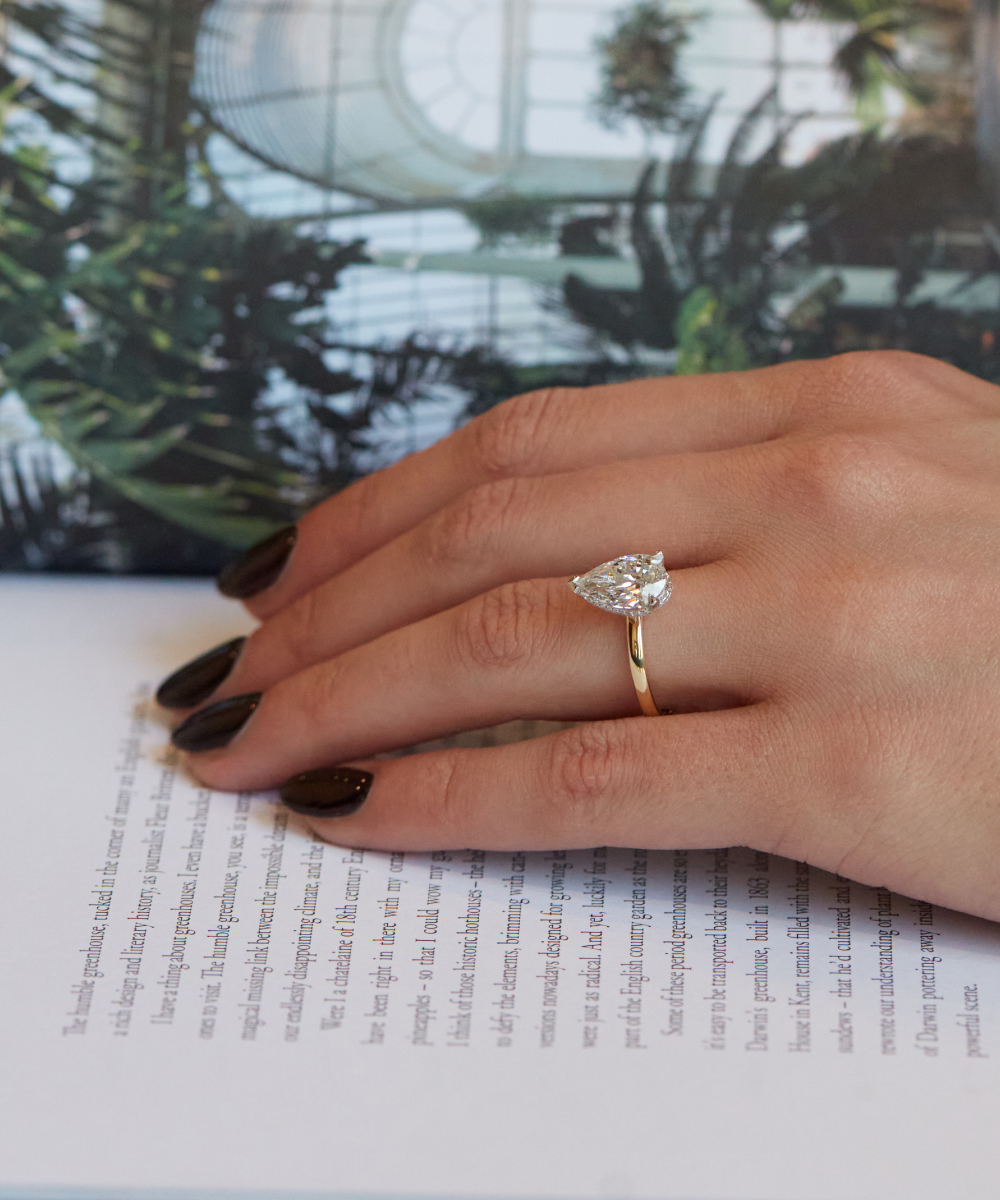News, inspiration & jewellery advice from the world of Phillip Stoner

As we introduce our own collection of Lab Grown Diamond Jewellery we thought it was important to weigh in on the Natural vs. Lab Grown Diamond debate that’s engulfing the Jewellery world at the moment. Should Synthetic Diamonds be embraced or ignored?
CREATED by PHILLIP STONER features exquisite pieces of fine jewellery and rings, set with certificated Lab Grown Diamonds. The pieces offer a much-coveted bigger look, for less, without sacrificing quality. Here we hope to answer some of the most common questions we have been asked about Lab Grown Diamonds.
Lab Grown Diamonds have the same chemical, optical and physical properties as Natural Diamonds. They are just as durable and just as beautiful!
Once they’ve been cut and polished, both Natural and Synthetic Diamonds are independently graded by diamond laboratories who will determine their Carat Weight, Colour, Clarity and Cut Grades. Phillip Stoner tends to use diamonds assessed by either the Gemological Institute of America (GIA) or the International Gemological Institute (IGI) when sourcing either Natural or Lab Grown Diamonds.
To the naked eye Natural and Synthetic Diamonds are very difficult to tell apart. If they have been cut well they will both refract light beautifully and sparkle with an intense fire.
When Natural Diamonds are cut, great care is taken during the planning stage to ensure as much as the rough material as possible can be utilised to create the maximum number of diamonds of desirable shapes and sizes, while leaving minimal waste. There isn’t such a worry about the loss of rough material when it comes to Lab Grown Diamonds so the cutters can be more creative, resulting in some incredible cuts that you wouldn’t normally see on a Natural Diamond.
Natural Diamonds are formed under the Earth’s surface in Molten Rock and their inclusions tend to be described as feathers, crystals, pinpoints or clouds. Lab Grown Diamonds are grown in a molten metal solution so their most common inclusions are metallic. Equipment is available to detect traces of metal in Diamonds so it is possible for specialists to determine whether a Diamond is Natural or Synthetic. Lab Grown Diamonds also have a laser inscription on their girdle, denoting their status.
Each Diamond sold at Phillip Stoner is sold with a Certificate issued by an independent diamond laboratory. Visually, the certificates look different, with Lab Grown Diamonds clearly labelled.
Lab Grown Diamonds are manufactured using one of two methods. The High-Pressure, High-Temperature (HPHT) method uses temperatures of more than 1,300 degrees celsius and over 50,000 atmospheres of pressure to create a diamond. The Chemical Vapour Deposition (CVD) method uses carbon-based gases, commonly methane, which is heated to hundreds of degrees celsius. CVD diamonds often have a brown or black hue so then have to be put through an additional heat treatment to make them colourless. The majority of Lab Grown Diamonds are currently produced in China and cut in India. A large amount of energy, usually generated by fossil fuels, is used to grow them so it would be irresponsible to claim all Lab Grown Diamonds are more eco-friendly than Natural Diamonds.
Some Lab Grown Diamond producers in Israel and the USA use partial or completely renewable energy so they can be considered more environmentally friendly, but these tend to command a higher price. Phillip Stoner can source Lab Grown Diamonds from many origins, as well as Recycled Gold, so please do mention this during your consultation if this is important to you.
The mining of Natural Diamonds isn’t without fault, however regulatory bodies such as the Responsible Jewellery Council and the Kimberley Process are in place to ensure standards are met throughout the supply chain.
Natural Diamonds are formed over millions of years under the Earth’s surface and there is a finite amount of rough material available. The rarity of Natural Diamonds, particularly ones of higher qualities, makes them incredibly desirable and a popular choice for engagement rings and fine jewellery. Each Natural Diamond is unique and has its own natural characteristics, which determines its value once cut.
Lab Grown Diamonds are manufactured in a molten metal solution in a matter of days or weeks depending on their size. Over the past decade they have entered mainstream markets and have become increasingly popular. To meet demand more and more Synthetic Diamonds are being produced, saturating the market. This has led to prices for Lab Grown Diamonds falling dramatically over the past few years.
Lab Grown Diamonds can offer consumers more for their money, so bigger Diamonds in better qualities are available at more attractive prices. As of June 2023, Synthetic Diamonds were typically 70-90% cheaper than their natural counterparts.
Because of their cheaper price points, pieces of Lab Grown Diamond Jewellery can also be cheaper to insure against loss or theft than the equivalent Natural Diamond Jewellery items.
Diamond markets fluctuate daily so it is impossible to say whether the prices of each will rise or fall in the future, however Natural Diamonds are a finite resource so their value will typically increase over a ten year period. The future of Lab Grown Diamond values is less certain.
There are pros and cons for both Natural and Lab Grown Diamonds but on balance, we’d happily buy either.
It’s hard to overlook the romance, history and prestige associated with Natural Diamonds so they’ll always be our favourites, however Lab Grown Diamonds can be a great alternative if you want a bigger look for less… 2ct Diamond Studs for less than £5,000? Yes please!
VIEW CREATED BY PHILLIP STONER >